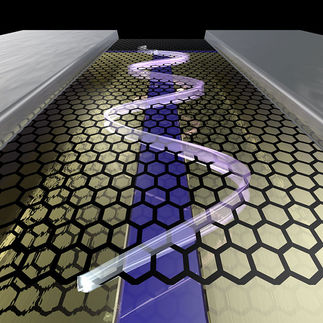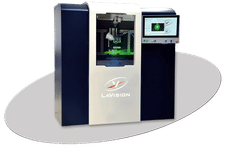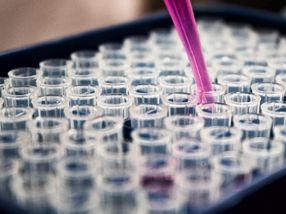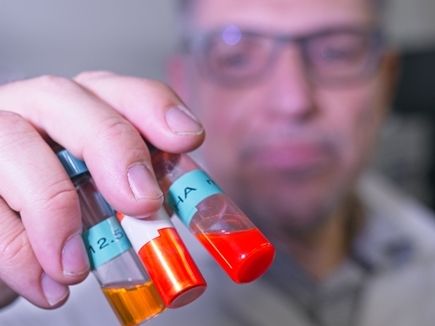Materials: The first graphene-based chiral sensor
Advertisement
A reusable, natural and cheap amylose-functionalised graphene sensor was developed for highly sensitive and visual fluorescent chiral sensing by a team in China.
The team found that the sensor’s detection sensitivity toward L-tryptophan was over 100 times higher than that of recently reported electrochemical sensors and colorimetric sensors. In comparison with commonly used DNA or peptides as a probe, natural amylose is more attractive because it’s cheap, readily available, simple to manipulate and is reusable.
The specific selectivity for tryptophan enantiomers towards other essential amino acids allows potential chiroselective analysis of tryptophan in complex samples such as biological fluids. This design can, in principle, be implemented for other target molecules that can form an inclusion complex with amylase, say the researchers.
Original publication
W Wei, K Qu, J Ren and X Qu, Chem. Sci., 2011.
Other news from the department science
These products might interest you
Most read news
More news from our other portals
See the theme worlds for related content
Topic world Sensor technology
Sensor technology has revolutionized the chemical industry by providing accurate, timely and reliable data across a wide range of processes. From monitoring critical parameters in production lines to early detection of potential malfunctions or hazards, sensors are the silent sentinels that ensure quality, efficiency and safety.

Topic world Sensor technology
Sensor technology has revolutionized the chemical industry by providing accurate, timely and reliable data across a wide range of processes. From monitoring critical parameters in production lines to early detection of potential malfunctions or hazards, sensors are the silent sentinels that ensure quality, efficiency and safety.


































































